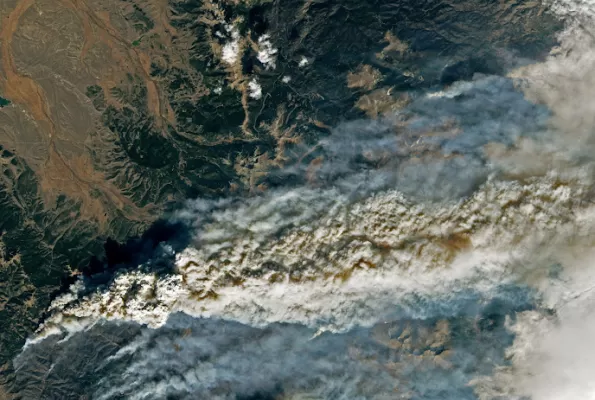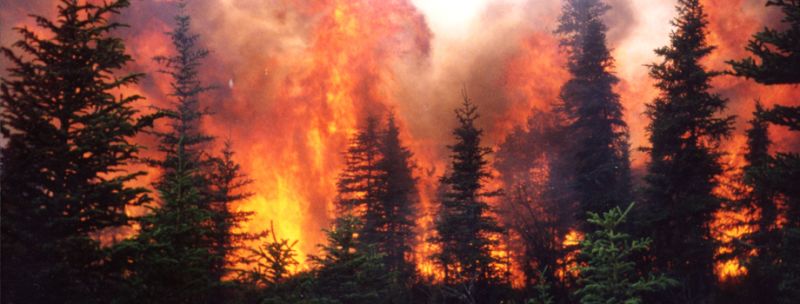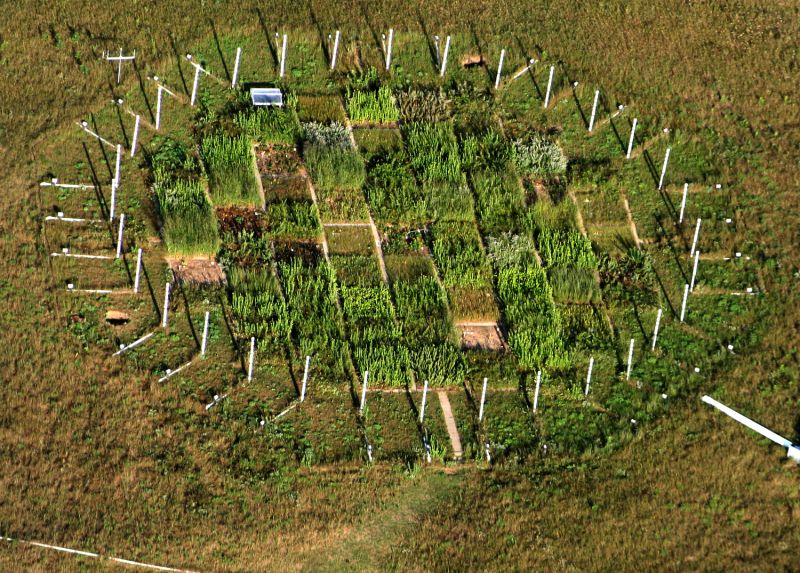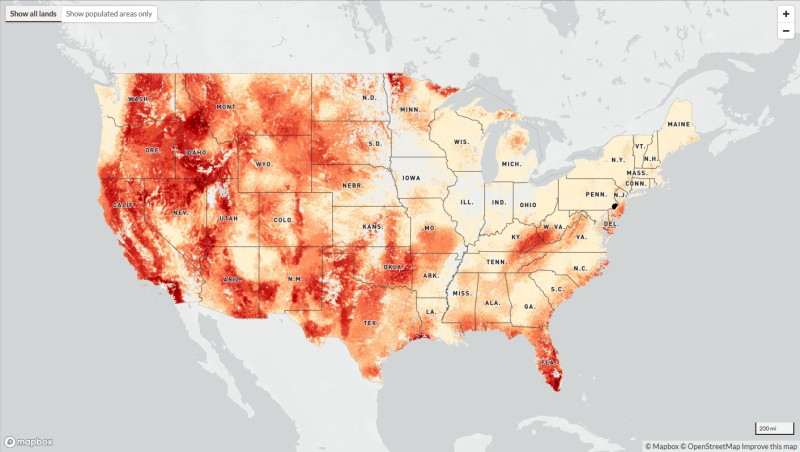
Wildfire and climate change: A burning issue
Wildfires are a nearly constant threat to lives, homes and business – an impact that cannot be diminished – but they are also a threat to ecosystems and climates. A changing climate can make some areas more susceptible to fire and increase the prevalence and size of fires in existing hot spots. Recent research shows the Rocky Mountains are burning more than at any time in the last 2,000 years due to climate change.
Across the globe, approximately 20% of carbon is stored in biomass – plants, trees and soil. The biggest amount of that stored carbon is in large, mature forests. As they burn, forest fires release carbon dioxide into the atmosphere, exacerbating already high levels of CO2 and contributing to atmospheric pollution. They can also make it harder for that area to act as a carbon store until new trees grow, which can take years, if not decades.
"How much a single fire can change the carbon cycle is dependent on series of feedbacks and interactions among the climate, vegetation, water levels, and the animals and even microbes in a particular ecosystem," said Kendra McLauchlan, a program director in NSF's Division of Environmental Biology and author of several papers on wildfire science.
Investments in long-term ecological science, data and community building, many of which funded by the U.S. National Science Foundation, are helping researchers understand how fire impacts climate change and vice versa. NSF-funded researchers have found that climate change impacts fire in different ways, as do human efforts to suppress fire. This research has implications for fire management as well as ecological and land management. Studying those interactions is key to helping to predict where, how and when fires will occur.
The value of long-term research
While each fire is different due to the features of the ecosystem at the time of the burn, fire regimes, the pattern in which fires naturally occur in an ecosystem over time, provide a general description based on characteristics – such as frequency, size, and seasonality – from multiple fires in a given ecosystem type. By examining multiple fires, these descriptions include an examination of fire over space and time, which is key to predicting future fires.
To provide greater data on the role time plays in the interactions between fire, the ecosystem and climate, NSF's Long-Term Ecological Research, or LTER, program, which funds a network of 28 sites in various ecosystems across the U.S, supports long-term studies of the impact of fire. Several of these studies have focused on the role and impact of fire in forests and grasslands.
In the largest ever study of its type, NSF-funded researchers at the Cedar Creek LTER site in Minnesota used decades of data to show that more intense and frequent fires are reducing the size of tree communities in many regions of the world. As tree sizes decrease, so too does the ability of those trees to capture carbon, leaving more CO2 in the air. The study found that slower-growing tree species are better at surviving fires, but may capture less atmospheric carbon and reduce nutrient availability in the soil.
In Alaska, location of the Bonanza Creek LTER site, spruce and deciduous broadleaf tree species, like aspen and birch, have been found to grow in certain areas after fire. The areas in which the deciduous trees grew stored carbon four times faster than the spruce trees did, accumulating more carbon than had been lost in the fires. This change in tree species after fires could provide a method for balancing out the climate impacts of the increasing number and severity of fires, but further research is needed to see how the aspens and birch trees fair over time.
Moving into the era of Big Data
The data from these and all other LTER studies and sites is made publicly accessible so they can be used in research across the network and beyond. In addition to LTER data, NSF infrastructure investments such as the National Ecological Observatory Network, or NEON, provide critical information in the effort to predict wildfires.
NEON sites collect data on the same variables from fieldwork, sensor-equipped towers and remote sensing from airborne observation platforms, allowing researchers to compare across ecosystems at the same time and conduct continental-scale research on fire, among other ecological phenomena. Jennifer Balch, a fire ecologist at the University of Colorado Boulder and a CAREER awardee, uses NEON airborne observations to understand how and how quickly forests and their carbon storage potential recover after wildfire. Balch's team is comparing the data from NEON with drone data of areas disturbed by fire in the last 30 years.
"Open environmental data is burgeoning; NEON alone provides 180 or so data products, many of which can be used to understand fire's impact on the ecosystem," said Matt Kane, a program director in NSF's Division of Environmental Biology.
To combine and make sense of all this data, NSF is currently holding a competition for the establishment of a Center for Advancement and Synthesis of Open Environmental Data and Sciences. The Center will speed up research and discovery by increasing the use of publicly accessible data sets – such as those from the LTER network, NEON, and other NSF-funded efforts like the Integrated Digitized Biocollections and the Global Biodiversity Information Facility – to address questions at the convergence of biology, informatics, and other sciences, such as climate change, and enhance systems for predicting and fighting wildfires, like the NSF-funded supercomputer WIFIRE. The Center also will diversify and train the future workforce that will use this data in research, including future studies at LTER sites that may build on Balch's work.
"By bringing together all of these data sources, and others, the Center will lead to a real democratization of environmental data and broaden participation in environmental science, including fire science," Kane said.
Building a community of fire researchers
Synthesizing the data is helpful, but so is synthesizing the community. To that end, NSF supported a five-day Wildfire and the Biosphere Innovation Lab to generate creative strategies and new research collaborations aimed at improving understanding of different types and sizes of fires over time – from the local to the continental level and beyond. Other topics included working to predict how wildfire, plants, animals and humans interact and improving the representation of biological processes in climate change models.
The Innovation Lab brought together a diverse and interdisciplinary research community –including biologists, sociologists, geologists, computer scientists, and data scientists. This resulted in high-levels of cross-disciplinary discussion and highlighted the need for ecologists, scientists in other disciplines, fire managers and other stakeholders to all work together to find answers.
"The lab was an opportunity for the community to break out of the silos that exist in fire-related research by bringing together scientist from diverse fields," said Philip Higuera, professor of fire ecology at the University of Montana and one of the leaders of the Innovation Lab. "Fire science requires convergence beyond disciplinary silos, and it's increasingly clear that wildfire needs to be considered as a social-ecological phenomenon."
Future of fire research
Further investigation of fires across various dimensions like space and time can help inform policy and ecosystem management methods that could limit the negative impacts on nature, humans and human-made infrastructure like homes and roads. Participants in the Innovation Lab are working on a coordinated roadmap for the future of wildfire research.
In addition to the roadmap, participants contributed to short papers that will shape the direction of this research area. Several key themes for the future of fire research arose: the feedback and interaction between biology, climate and the way in which fire burns in various locations across time; the co-production of knowledge and methods to analyze and share new data both within the research community and with other stakeholders; and the need for increased training and education opportunities in fire science, data literacy and data analysis.








